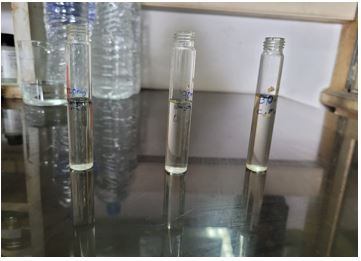Evaluation of Changeri Masi (Oxalis corniculata Linn.) in altering the copper concentration in water
DOI:
https://doi.org/10.21760/jaims.8.5.4Keywords:
Analytical Study, Atomic Absorption spectroscopy, Changeri Masi, Copper, Copper sulphate.Abstract
Introduction: The presence of heavy metals in water has been increasing with industrial growth and human activities. The major source of copper in drinking water is corrosion of household plumbing, faucets, and water fixtures. Most commonly used copper salt is copper sulphate (CuSO4. 5H2O). It is used as a general pesticide rated as toxicity class 1 highly toxic. Unfortunately, most people are not aware of the safe level and they overuse it causing residue in soil, water, which endangers human and environment. According to EPA the permissible amount of copper in drinking water is 1.3mg/L. As Cu is non-biodegradable, poisonous, and easy to accumulate in living organisms in general and especially in the human body at low concentrations; they can cause major illnesses such as cancer, nervous system damage, and kidney failure, and can be fatal at high doses. hence, it’s important to remove Cu metal from water as well as wastewater. Materials and Methods: Changeri (Oxalis corniculata Lin.) plant is collected as a whole, dried and prepared Changeri Masi (ash) out of it. Copper contaminated water was prepared by adding copper sulphate in distilled water. Amount of copper were evaluated with AAS and fixed to 3mg/L. Different concentration of Changeri Masi was added to copper contaminated water and keep it for different contact time. Results: Changeri Masi mixed copper water filtered through a filter paper and reading was taken in atomic absorption spectroscopy. Significant reduction in copper was observed.
Downloads
References
El-Sherif, I. Y., Tolani, S., Ofosu, K., Mohamed, O. A. & Wanekaya, A. K. Polymeric nanofibers for the removal of Cr(III) from tannery waste water. J. Environ. Manag. 129, 410–413 (2013).
Zou, Y. Et al. Environmental remediation and application of nanoscale zerovalent iron and its composites for the removal of heavy metal ions: a review. Environ. Sci. Technol. 50, 7290–7304 (2016)
Al-Saydeh, S.A.; El-Naas, M.H.; Zaidi, S.J. Copper removal from industrial wastewater: A comprehensive review. J. Ind. Eng. Chem. 2017, 56, 35–44.
Ab Hamid NH, bin Mohd Tahir MI, Chowdhury A, Nordin AH, Alshaikh AA, Suid MA, et al. The current state-of-art of copper removal from wastewater: A Review. Water. 2022;14(19):3086.
Cdn-ext.agnet.tamu.edu. 2021 [cited 6 July 2021]. Available from: https://cdnext.agnet.tamu.edu/wp-content/uploads/2019/04/EL5472-drinking-water-problemscopper.
Demcak, S.; Balintova, M.; Hurakova, M.; Frontasyeva, M.V.; Zinicovscaia, I.; Yushin, N. Utilization of poplar wood sawdust for heavy metals removal from model solutions. Nova Biotechnol. Chim. 2017, 16, 26–31, doi:10.1515/nbec-2017-0004
Angadi R, Sadānandaśarmā, Sadānandaśarmā. In: Rasa taraṅgiṇī: āyurveda Pharmaceutics & Indian alchemy of śrī sadānanda śarmā: With 'transcendence' descriptive English commentary. Varanasi: Chaukhamba Surbharati Prakashan; 2015. P. 274.
Sastry J.L, Illustrated Dravya Guna vijnana, Vol 2, Chaukhambha Orientalia,2004. p.104.
Srikanth M, Swetha T, veeresh B, Phytochemistry and pharmacology of Oxalis corniculata linn.: a review, international journal of pharmaceutical science and research. 2012:3(21) 4077-4085
Karunanithi S, Rajkishore VB, Pol vandhanaganesh, M smumthana, Abirami. D, Jayshree Dr. Pharmacognostical and phytochemical studies on leaves of Oxalis corniculata Linn. The Journal of Phytopharmacology. 2016;5(6):225–9.
Z. Mary, K.G Vasantha, P saraswathy,T. Bikshapathi, pharmacognostical studies on Changeri Oxalis corniculata linn. (oxalidaceae), Ancient Science of Life.2001: 2(21)120-127
San San Htay, Phyu Phyu Lwin, Swe Zin Myint. Determination of Phytochemical Constituents and Oxalis Corniculata Linn. (Hmo-na-do) By Thin Layer Chromatography Method and Its Nutritional Values. 3 rd Myanmar Korea Conference Research Journal Volume 3, No. 5 :1785-1793. A Semantic Study of Taste-related Words in the Myanmar Language (dagonuniversity.edu.mm)















